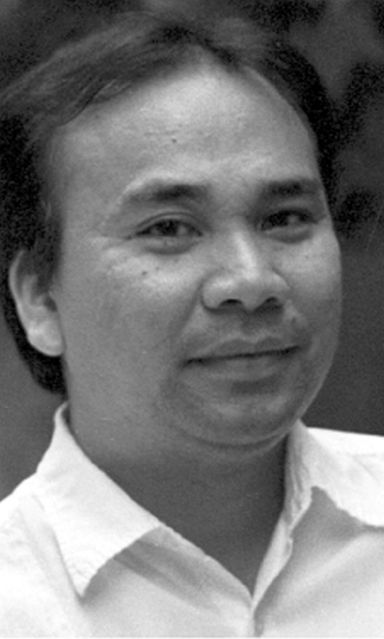Commemorative reenactments and artistic license

BERSALES
The fog of history can make commemorative reenactments problematic for the nitpicker and the customary historian and scholar but entertaining for the rest. Tomorrow, the historic Battle of Mactan will once again be commemorated with a mock battle, pitting Spanish-looking actors against not-so-white “native”-looking counterparts. The Spanish side will be led by a mestizo or even Caucasian-looking tall, well-muscled “bearded” actor of note while the “natives” will be led by someone equally appropriate to look tanned and sunburnt—and perhaps a not-so-tall nose. There will be a dance or two on the part of the natives, clad in ‘appropriate’ period attire for an event that happened 497 years ago on the shores of Mactan.
When my good friend, the expert event organizer and artistic director Junjet Primor asked me to help provide some historical ‘authenticity’ to the annual event that he was asked to produce last year, I read to him and his choreographers the pertinent paragraphs in the English translation of Antonio Pigafetta’s “Relazione del primo viaggio intorno al mondo.” Though sparse, they used those same paragraphs, coupled with the illustration of the “Boxer Codex”, to closely ‘approximate’ the commemorative and entertaining reenactment.
Of course there was no dancing or singing when the actual battle happened. Who would sing songs or do group dancing early in the morning when seeing a huge ship with white-looking armed men warning of a looming battle? And yet this had to be placed into the reenactment as otherwise, the entire event would be understandably “boring” to the crowd and it would be difficult to introduce the main actors playing Lapulapu, his wife Bulakna, and Magellan to the huge crowd gathered.
Serious people will lament this but that is what artistic licensing is all about especially when dealing with an event written about in just a handful of paragraphs. Lapulapu is not even described by Pigafetta as to how he looks like. Notice in this column that I put quotation marks on such words as appropriate, authenticity, authentic? That is because there was now ABS-CBN or GMA 7 News when the event happened. At best, what we have are interpretations of a few paragraphs vaguely describing an event.
“It’s based on a true story, and, obviously, we made some things up along the way,” said George Clooney, the main actor of the movie ‘Monuments Men,’ that film made about real art historians embedded with the US army in war-ravaged Europe to look for thousands of artwork that had disappeared from museums and private collections in World War II. “We had to change the names of the characters because we wanted to give some of them some flaws, for entertainment purposes, quite honestly, for storytelling purposes,” Clooney said. That closely approximates artistic license.
The best example for me is what columnist Bobit Avila has lamented about the annual reenactment of the Talisay Landing every March 26th. One is enthralled and equally entertained by that helicopter landing a bunch of Marines armed with armalites firing at chinky-eyed actors playing Japanese soldiers near the commemorative monument to the event. There is no war dance or a song here and there. Nevertheless, the event entertains. But all of this is artistic license. In truth there was no active Japanese resistance when the landing happened in 1945, only IEDs, improvised explosive devices, hidden beneath the sands together anti-tank mines and trenches with sharpened bamboo lances.
But that fact has not prevented the city of Talisay from commemorating the event the way it wants to, complete with the dwindling number of WWII veterans. And, therefore, the whole reenactment has to be read as a symbolic gesture: a commemoration more symbolic than actual. That is why one hears no complaints from those attending veterans, some of them witnesses to the actual event.
(Incidentally, I was told but cannot yet confirm that a group of Japanese citizens protested this year’s reenactment which included a dramatization of some of the atrocities committed by their countrymen on hapless Cebuano men and especially women, an interpretation based on our book, “The War in Cebu.” But I still have not received any actual documentation of such a complaint and therefore cannot comment on it except to say that the atrocities I personally wrote about in that book were based on archival war crimes documents, complete with maps and pictures and names of the perpetrators and what happened to some of them during and after the war).
Thankfully, unlike the Talisay Landing, no one complains of whether the Battle of Mactan reenactment is authentic or not. But why should one complain, if at all? We have but a few vague paragraphs that tell us of what really happened 479 year ago. Unlike that of the Talisay Landing, which is so relatively recent and so vividly documented in actual pictures, maps, and a full report. And so choreographers are left to their own devices, preferably an artistic and thus entertaining license to do so, but, and this is important, one based on a careful reading of historical documents of the period in question. In the end everyone can go home victorious and proud, including of course those paid to perform.
Disclaimer: The comments uploaded on this site do not necessarily represent or reflect the views of management and owner of Cebudailynews. We reserve the right to exclude comments that we deem to be inconsistent with our editorial standards.
